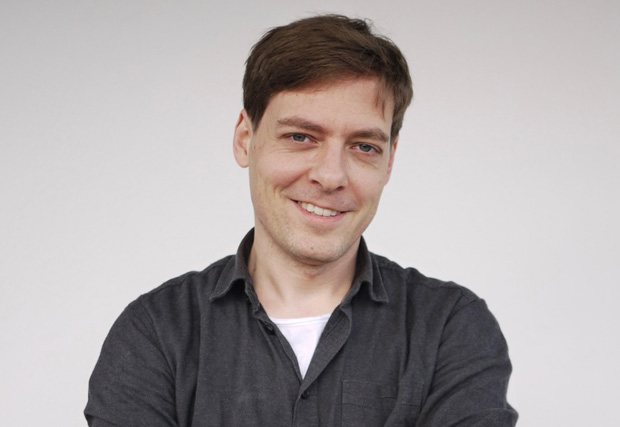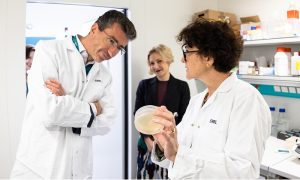
Reconstructing the human past
What genetics can tell us about the structure of ancient human populations

Following his Science and Society Forum lecture, ‘Genetic history: What ancient and modern DNA tells us about our human past’, and ahead of the EMBO | EMBL Symposium ‘Reconstructing the Human Past – Using Ancient and Modern Genomics’, speaker Stephan Schiffels discusses his research and what attendees can expect from the symposium.
You studied physics at university. How did you get into doing research on ancient human populations?
In physics I think you tend to have many people working on a few important problems, while in biology you have comparatively fewer people working on an enormous number of different problems. For me, that’s a wonderful situation: there’s so much data and so many questions to ask, both in biology generally and also in population genetics, which is the field I’m working in. It’s just a fascinating field where people with good mathematical and analytical training can do a lot. It really started when I was studying physics at university and took a course called ‘Physics of biological systems’, or something like that. I found it fascinating that the tools of physics are so well suited for solving problems in biology. Understanding the past by analysing genomes is something that hooked me completely.
You work at the Max Planck Institute for the Science of Human History in Jena, Germany. Can you tell me a bit more about the Institute?
It’s a special place. There are efforts to combine history and genetics at other institutes, but often it’s more on the level of things like joint grant applications and funding. Here there’s an entire institute formed around the idea that you can join up the sciences and humanities in this way, and I think that’s quite unique. We have three departments: Archaeogenetics, Archaeology, and Linguistic and Cultural Evolution. This doesn’t mean that every research project we do is completely multidisciplinary, but we go to each other’s talks, we have joint conferences and meetings, and there’s a huge amount of exchange. Just the fact that we’re together in one building is great.
What are the big questions you’d like to answer in your research?
In 2014, during my postdoc with Richard Durbin at the Wellcome Sanger Institute, UK, we developed a method known as the multiple sequentially Markovian coalescent (MSMC). This acts like a looking-glass back in time, allowing us to see evidence for population structure up to or even beyond a million years ago. We have that looking-glass, but now I want to build a microscope to look at more recent events. In other words, I want to have methods that can reveal the fine structure of populations. The question is whether we can find genetic signatures that are really local enough to be able to do this. In the past 2,000 years the genetic makeup of Europe has become quite homogenised, so it’s difficult to identify genetic differences between, say, populations from Poland, the Czech Republic, Austria, Germany, or the Netherlands. To understand more about the history of these populations, we need this microscope. That’s something I’m excited to work on – to go more into the historical time period and use genetic methods that can microscopically show us fine-scale population differences.
What kinds of methods could you use to give you that microscopic view?
This is something I’m working on. Often in genetic studies of ancient populations we look at mutations that have reached a certain frequency in the population – so-called common genetic variation. In this case we’re talking about extremely old genetic variants that probably emerged millions of years ago, or hundreds of thousands of years ago, that are present everywhere. They’re present in different populations with different frequencies and that’s the kind of signal that we pick up and try to work with. For example, if we find a different genetic profile in Asia than in Europe, it’s because in the last 30–40,000 years since these populations have separated, they’ve had independent genetic drift, which changes the frequencies of these mutations in different ways. This is a great method that allows us to analyse genomic data very cheaply, because we can just look at certain specific variants in the genome that we know are in this set of common variation genetic markers. However, this method is not very good for understanding differences between closely related groups. There, my idea is that we could study rare genetic variation. So if you sequenced maybe 20 or 50 modern genomes from a population, you could identify variants that are specific to that population. This should make it possible to identify variants that have emerged so recently that they can be used to identify specific groups. This is a very different concept, and there are a lot of questions still to answer about how it would work. It would mean that we need to sequence the entire genome because obviously we don’t know in advance where in the genome these rare variants would be found. That makes it much more expensive than current methods, where we usually sequence only certain predefined parts of the genome.
In March 2019 you’ll be here for the EMBO | EMBL Symposium ‘Reconstructing the Human Past – Using Ancient and Modern Genomics’. What are you planning to talk about at the symposium?
We have a big project currently that’s about how the Arctic was first populated and how the genetic components there mixed and gave rise to the peoples that we see there today. That’s a big project that will hopefully be published in the next few months, so I’m hoping I can talk about that at the symposium. The other thing is what I’ve mentioned about the microscope – these new methods that can get to the fine structure of population dynamics. We’re working heavily on that in my group, so I might be able to talk about applications of these methods to difficult cases and show that our methods really do give an advantage. We have several projects where I’m using this kind of method, for example to study Anglo-Saxon populations in Britain, or the structure of Iron Age populations in Europe. There are many projects in the pipeline where these methods could be really valuable.
Stephan Schiffels will be a speaker at the forthcoming EMBO | EMBL Symposium ‘Reconstructing the Human Past – Using Ancient and Modern Genomics’. For further details and to register, click here.


